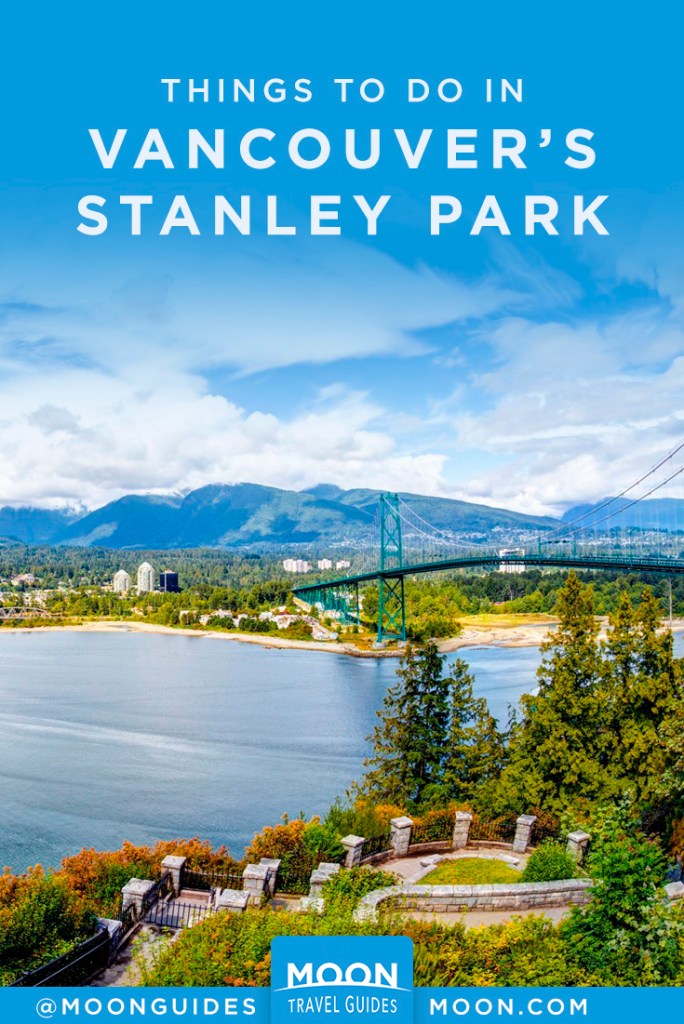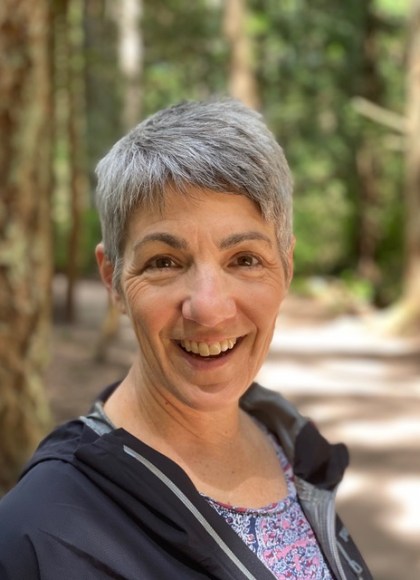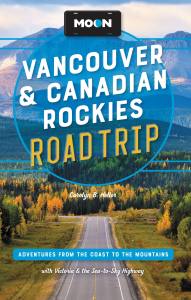Things to Do in Vancouver’s Stanley Park
A dense rainforest at the end of the downtown peninsula, Stanley Park is a green refuge, incorporating First Nations culture and heritage, woodland and waterfront trails, the city’s aquarium, and spectacular urban and harbor views.
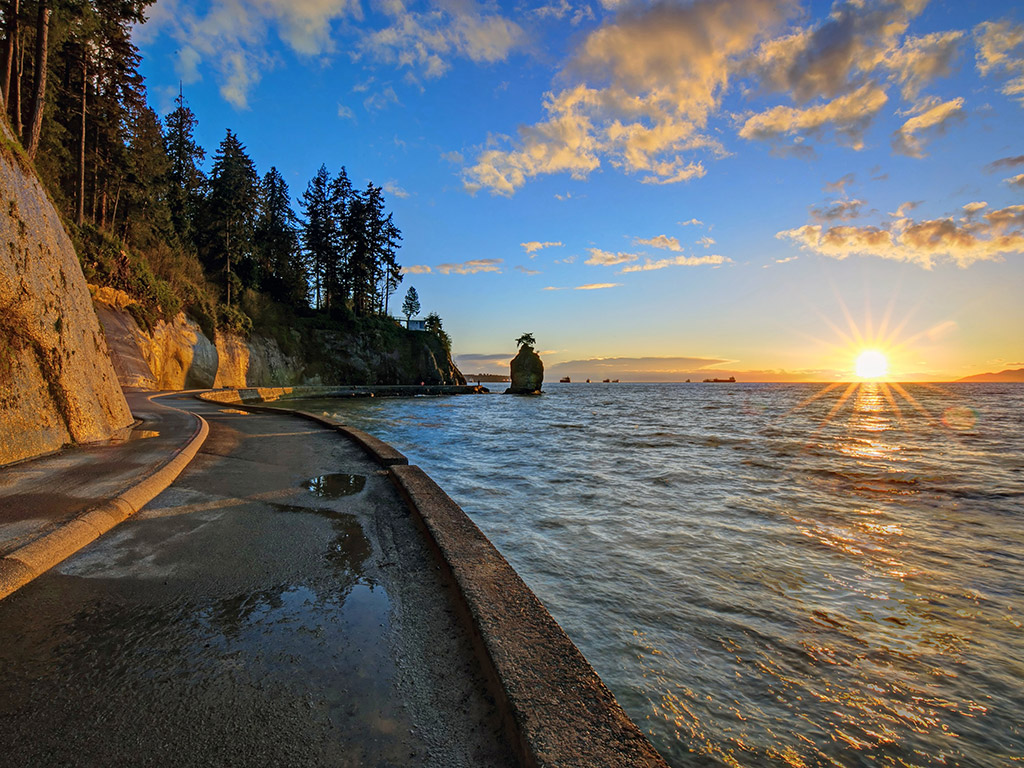
Sights in Stanley Park
The Seawall, a 5.5-mile (9-kilometer) walking and cycling path, circles the perimeter of Stanley Park and passes many of the park’s attractions. You can also follow the park’s outer edge by car along Stanley Park Drive. It’s also worth exploring the park’s interior trails, many of which pass through old-growth rainforest.
Among Stanley Park’s highlights are the totem poles at Brockton Point and Siwash Rock, an offshore rock formation that figures in First Nations legends. A family-friendly stop is the Vancouver Aquarium Marine Science Centre (845 Avison Way, 604/659-3474; 9:30am-6pm daily July-early Sept., 10am-5pm daily early Sept.-June; adults $36, seniors and students $27, ages 4-12 $21), which is Canada’s largest aquarium.
On a finger of land jutting into the harbor on Stanley Park’s east side, the red and white Brockton Point Lighthouse was built in 1914. The Seawall travels under the lighthouse, through archways that support the lighthouse tower.
From Prospect Point, the highest spot in Stanley Park, you have great views of the Burrard Inlet, the North Shore mountains, and the Lions Gate Bridge, one of the world’s longest suspension bridges.
A giant western red cedar, roughly 800 years old, is one of Stanley Park’s best-known landmarks and the source of much controversy. Known as the Hollow Tree, the massive cedar on the park’s west side stopped growing in the 1800s and was essentially a 42-foot-tall (13-meter) tree stump. A 2006 windstorm damaged the tree, causing it to lean precipitously. The historic tree was eventually stabilized with a steel core and a foundation of underground steel “roots.” The tree is along Stanley Park Drive, north of Third Beach.
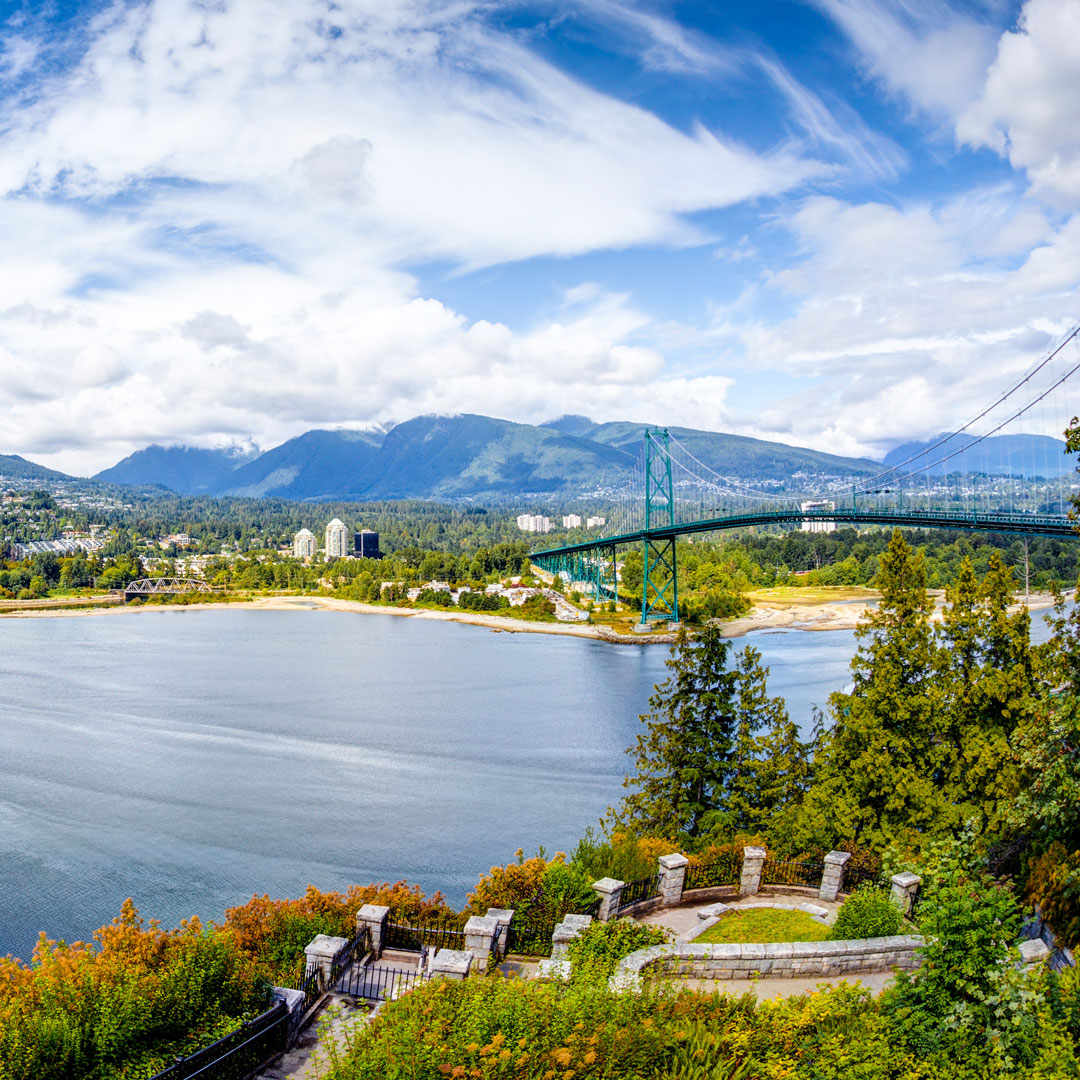
Tours in Stanley Park
The park has a long and rich First Nations heritage. Several First Nations, including the Burrard, Musqueam, and Squamish people, made their home in the park for several thousand years. To learn more about the park’s aboriginal connections, take the 90-minute guided Talking Trees Walk with First Nations’ owned Talaysay Tours (604/628-8555 or 800/605-4643; 10am and 12:30pm daily May-Sept.; adults $35, ages 4-18 $28).
One option for getting around Stanley Park is on a trolley tour. The Vancouver Trolley Company (604/801-5515 or 888/451-5581) runs a year-round hop-on hop-off tour (one-day pass adults $45, seniors and ages 13-18 $42, ages 4-12 $28) that takes visitors to eight stops within the park and to 27 other locations throughout the city. From late June through early September, the company also operates the Stanley Park Shuttle (11am-6pm daily late June-early Sept.; adults, seniors, and ages 13-18 $10, ages 4-12 $5), a narrated ride that makes 15 stops within the park.
Newsletter Signup
By clicking ‘Sign Up,’ I acknowledge that I have read and agree to Hachette Book Group’s Privacy Policy and Terms of Use
Stanley Park Beaches
Along the Seawall on the west side of Stanley Park, you can swim or sun at busy Second Beach. This sandy cove is also a pretty spot to watch the sunset. There’s a seasonal snack bar and a children’s playground near the beach. Third Beach at Ferguson Point on the west side of Stanley Park is a quiet stretch of sand with views toward the North Shore.
Water Sports on Stanley Park
A unique way to explore Stanley Park is from the water. Rent a kayak from Ecomarine Paddlesports Centre (1700 Beach Ave., 604/689-7575 or 888/425-2925; 10am-dusk Mon.-Fri., 9am-dusk Sat.-Sun. late May-early Sept.) on the beach at English Bay, paddle past Second and Third Beaches, and see Siwash Rock from the water. If you don’t want to navigate the route on your own, take their 2.5-hour guided kayaking tour (9:30am Thurs. and Sat., June-early Sept., $69 pp).
Hiking in Stanley Park
Some of the park’s interior trails include Tatlow Walk, which cuts across the southwest corner of the park, between Third Beach and the north side of Lost Lagoon; Rawlings Trail, open to cyclists and pedestrians, which parallels Park Drive on the west side of the park and takes you past the Hollow Tree; and the Beaver Lake Trail, which circles the lake of the same name near the center of the park.
The City of Vancouver publishes a Stanley Park trail map on its website (http://vancouver.ca). Don’t hike alone on these interior trails, as they can be surprisingly secluded even when the Seawall and beaches are busy.
Cycling in Stanley Park
Vancouver’s most popular cycling route runs along the Seawall, and the most scenic section of the Seawall is the 5.5-mile (9-kilometer) loop around Stanley Park. The paved path passes many landmarks, including the totem poles at Brockton Point, Prospect Point, and Siwash Rock.
The Mobi bike share program (778/655-1800) has a number of locations that are convenient to Stanley Park. You can also rent bikes from several West End shops, just outside the park’s boundaries:
- Spokes Bicycle Rentals (1798 W. Georgia St., 604/688-5141; 9am-5:30pm daily; starting at $8-17/hour)
- Bayshore Bicycle Rentals (745 Denman St., 604/688-2453; 9am-dusk daily; starting at $6-14/hour, 2-hour minimum)
- English Bay Bike Rentals (1754 Davie St., 604/568-8490; 9am-6:30pm daily; starting at $9-$15/hour, electric bikes $18/hour)
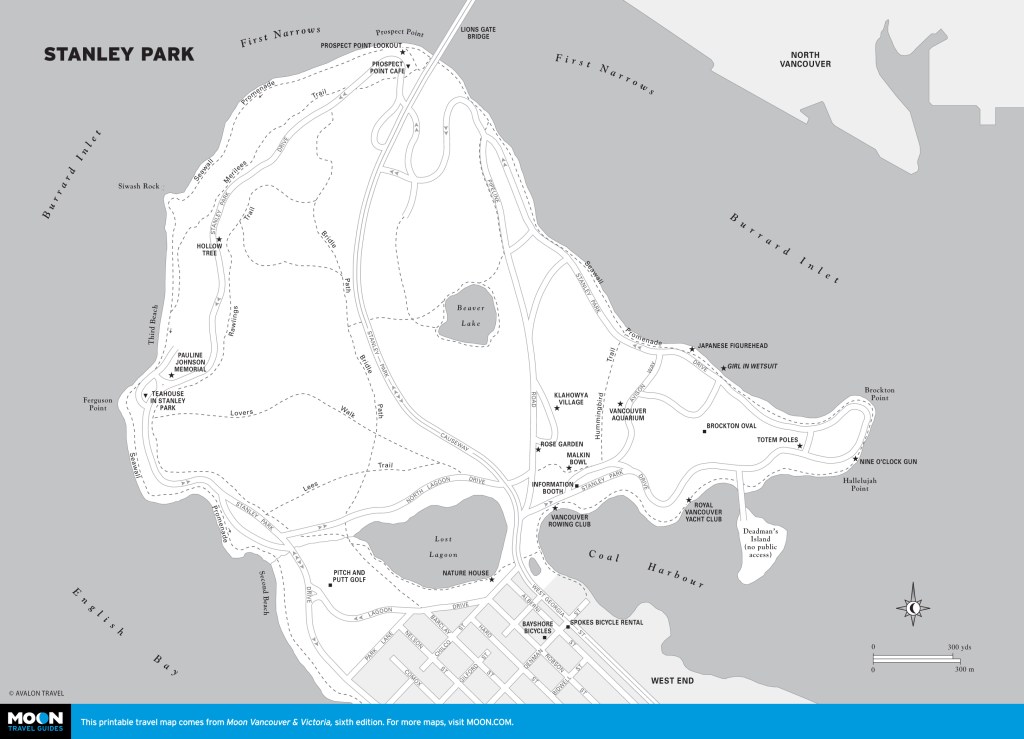
Practicalities
All of the parking lots are fee-based ($3.25/hour Apr.-Sept., $2.25/per hour Oct.-Mar.). If you purchase a daily pass, you can use it at any parking lot within the park. You can enter Stanley Park on two sides: from West Georgia Street, near Coal Harbour, or from English Bay, near the intersection of Denman and Davie Streets.
Just above Third Beach, the Teahouse in Stanley Park (Ferguson Point, Stanley Park, 604/669-3281) serves a crowd-pleasing menu of west coast favorites, from smoked salmon and Pacific sablefish to burgers and steaks. The patio is particularly lovely on a sunny day or at sunset.
Newsletter Signup
By clicking ‘Sign Up,’ I acknowledge that I have read and agree to Hachette Book Group’s Privacy Policy and Terms of Use
Pin For Later
